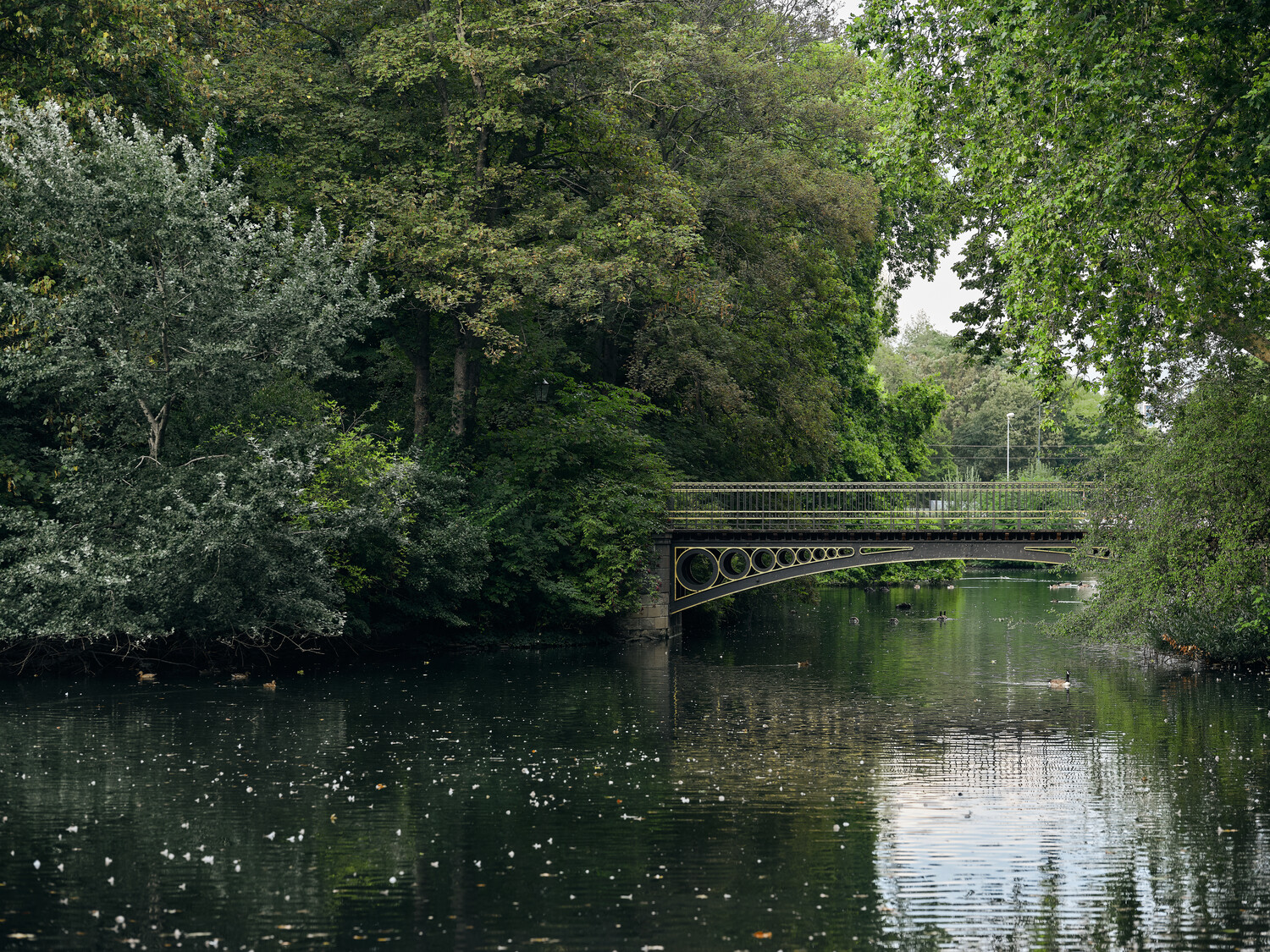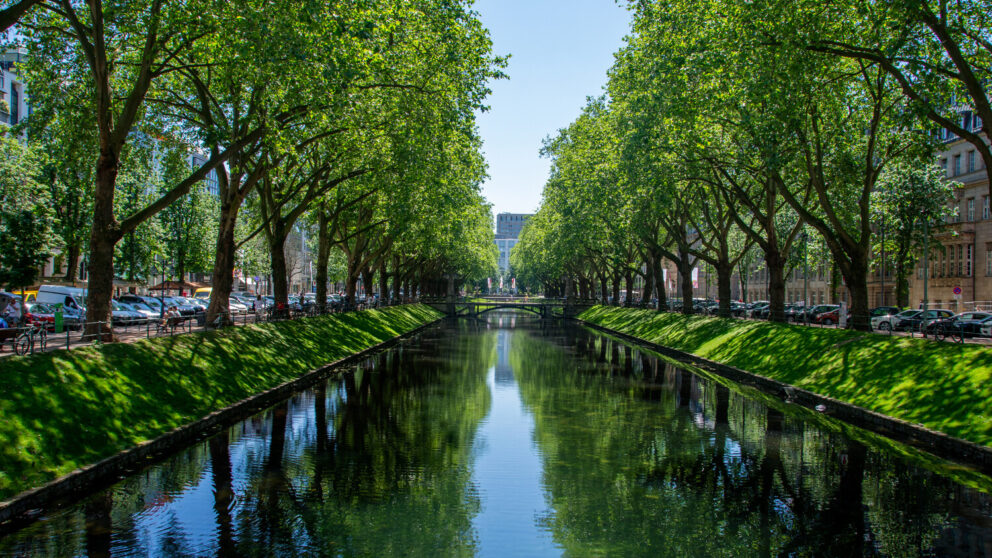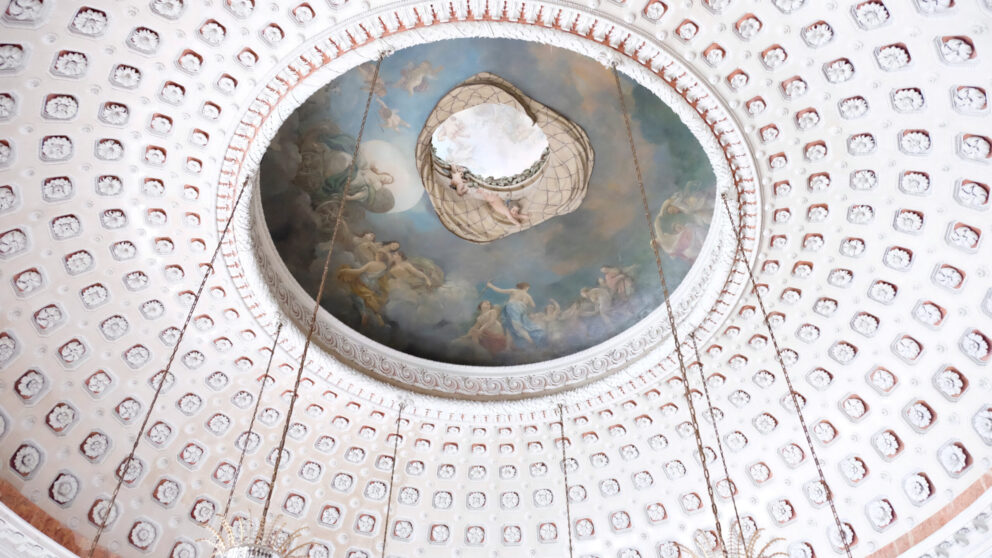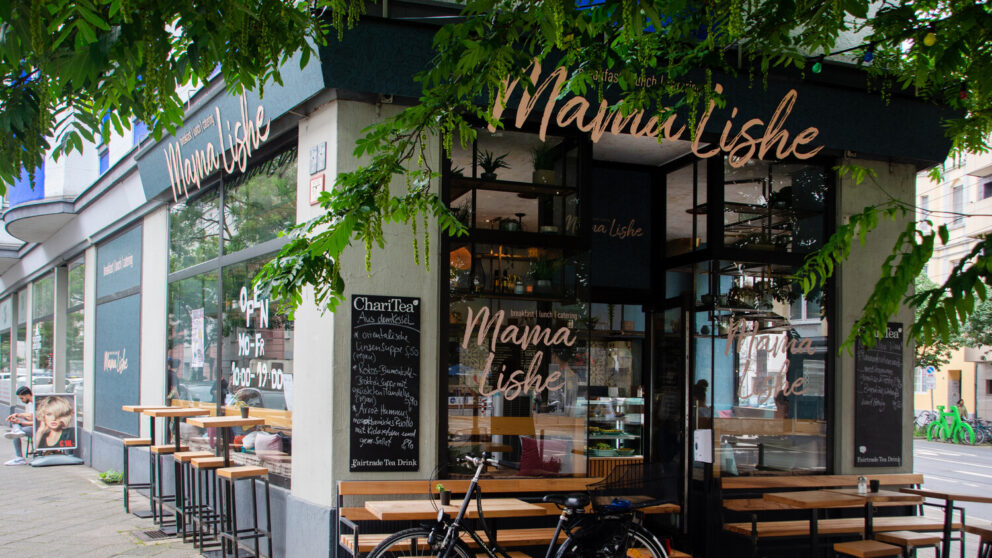
Six discoveries in the courtyard garden
Six discoveries in the courtyard garden
Forest bathing? This recreational activity also works in Düsseldorf in the middle of the city - with "Parkbaden" in the Hofgarten! Numerous highlights await you on 27.5 hectares
A stone's throw away from shopping temples and the pubs of the old town, you will find peace and relaxation in the Hofgarten. You can stroll in the shade under old plane trees, jog along the wonderful sight lines or enjoy the view of the perfectly shaped park from Napoleon Hill. As the first and oldest public garden in Germany, the 27.5-hectare park is also a prime example of the English landscape garden! Everything here looks like nature, but is actually the result of precise planning. The Hofgarten also delights locals and visitors alike with a variety of art objects. At the same time, nature lovers get their money's worth.
Watching hundreds of water birds
Ornithologists, whether full-time or just in their spare time, enjoy sightings of a wide variety of bird species in the Hofgarten. In the water basin named Landskrone, but also at the Swan House not far from the city's oldest pedestrian bridge, the Golden Bridge, one can observe, among others, the barnacle goose, which breeds in the Arctic in summer, the Central European mute swan and the gadwall, which also lives in Central Asia and North America. And if even the Bahama Duck feels at home in the Hofgarten, although - as its name suggests - it could also live on the tropical archipelago in the Atlantic, then that speaks pretty clearly for the park, doesn't it?!
For the sake of the environment
At a time when climate protection plays such an important role, cities can't seem green enough. Not far from the Weyhe Passage (which, by the way, was named after court gardener Maximilian Friedrich Wehye, who took over the design of the park in 1804), if you look closely, you will see a sign on the trunk of the primeval sequoia tree! This plant, which originates from China and grows up to 50 meters high, is a very special one - namely a living fossil. This means that the species has survived more or less unchanged over geologically long periods of time. The gingko, for example, is also one of them. By the way, just a few meters away, once up the hill opposite the tree to the "Pineapple Hill", a plane tree regularly comes up big. Because not only young people, but also older gentlemen like to sit on the low-growing branches of the ancient tree.
Art under the open sky
Art fans get their money's worth in numerous museums and galleries throughout Düsseldorf. But did you know that the Hofgarten is a free open-air museum? All year round, whether it's 40 degrees in the shade, drizzling rain or permafrost with a blanket of snow, you can marvel at sculptures by some of the most important artists of their time on the green space. To name just a few examples: Near the Kö, you'll marvel at Henry Moore's bronze sculpture "Reclining Figure in Two Parts" from 1969, while not far from Jägerhof Palace with its resident Goethe Museum, you'll take in Manolo Valdés' "Meninas," or the court ladies based on the famous painting by Diego Velázquez. The Heinrich Heine Memorial is adorned with the bronze sculpture "Harmony" by Aristide Maillol. By the way, you should definitely visit the Hofgarten in the evening or at night: Then the light benches designed by artist Stefan Sous shine on both sides of Jägerhof-Allee.
Perfect route for cycling and inline skating
Unfortunately, cycling is considered a dangerous undertaking in many big cities, and the same applies to inline skating in traffic. The good news is that in the Hofgarten you can roll along the numerous paths in such a relaxed manner that you won't even be able to stop for the adrenaline. The Jägerhof avenue alone is one of the most beautiful settings for doing sports in the fresh air and under the watchful eye of numerous unicorns. On the Reit-Allee in the park section on Kaiserstrasse, you can make yourself comfortable in the warmer seasons for yoga, Pilates or picnics, while children let off steam on the adjacent playground near Inselstrasse. Incidentally, the first gymnastics field in the Rhineland was opened there in 1815.
Horticulture at its best
French-Baroque style meets English landscape garden with wide meadows, valleys, lakes and an impressive tree population: this is how the Hofgarten can be described in a few words. Friends of horticultural art enjoy accurately trimmed box hedges, beds of tall perennials and plantains, some of which have been in place since 1808. Incidentally, with its outstanding design, the Court Garden was intended for the use of the general public from its opening in 1770 - and not just for a prince, as was the case with so many other gardens in Germany. Since 1998, the entire green space has been protected as an architectural monument.
Eye-catcher not far from the Hofgarten: Kö-Bogen II
If your environment adapts to you, you've probably done a few things right - this principle undoubtedly also applies to the Hofgarten. After all, just a three-minute walk from the "Grönen Jong," or fountain designed by sculptor Josef Hammerschmidt, stands one of the greenest buildings in the city - which, with a little imagination, can also be seen as an extension of the park. Several thousand hornbeams grow on the five-story building called Kö-Bogen II, designed by architect Christoph Ingenhoven, as an environmentally friendly alternative to a concrete facade. Incidentally, other important buildings also appreciate the direct vicinity of the Hofgarten: museums such as the NRW-Forum and the Kunstpalast, the opera, the Tonhalle and also the Schauspielhaus can be reached within a few minutes' walk from the park or are directly adjacent to it.
Title image: Düsseldorf Tourism




